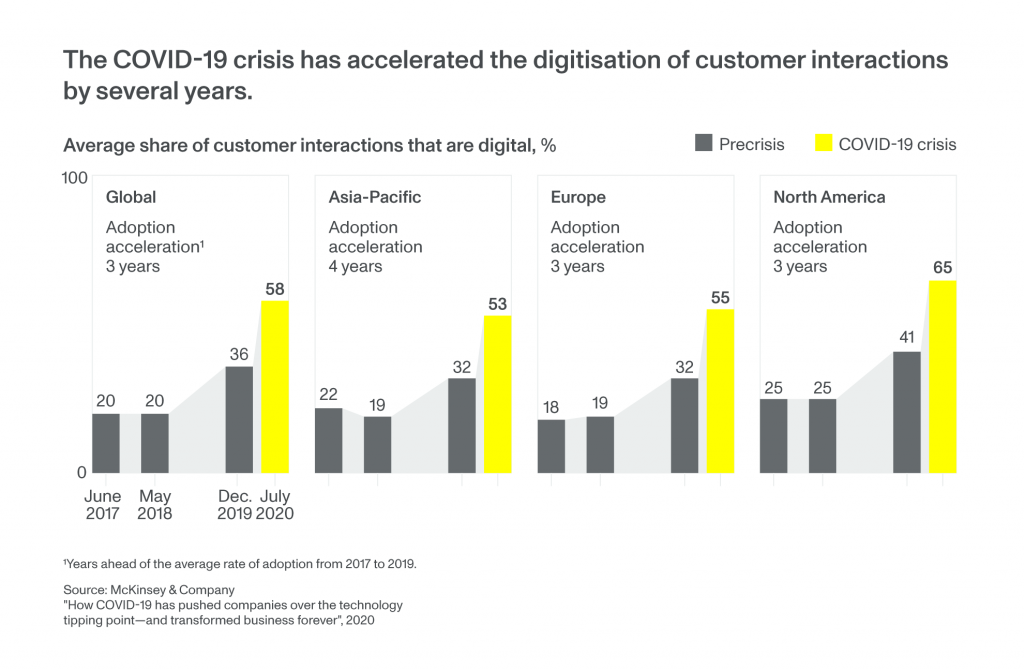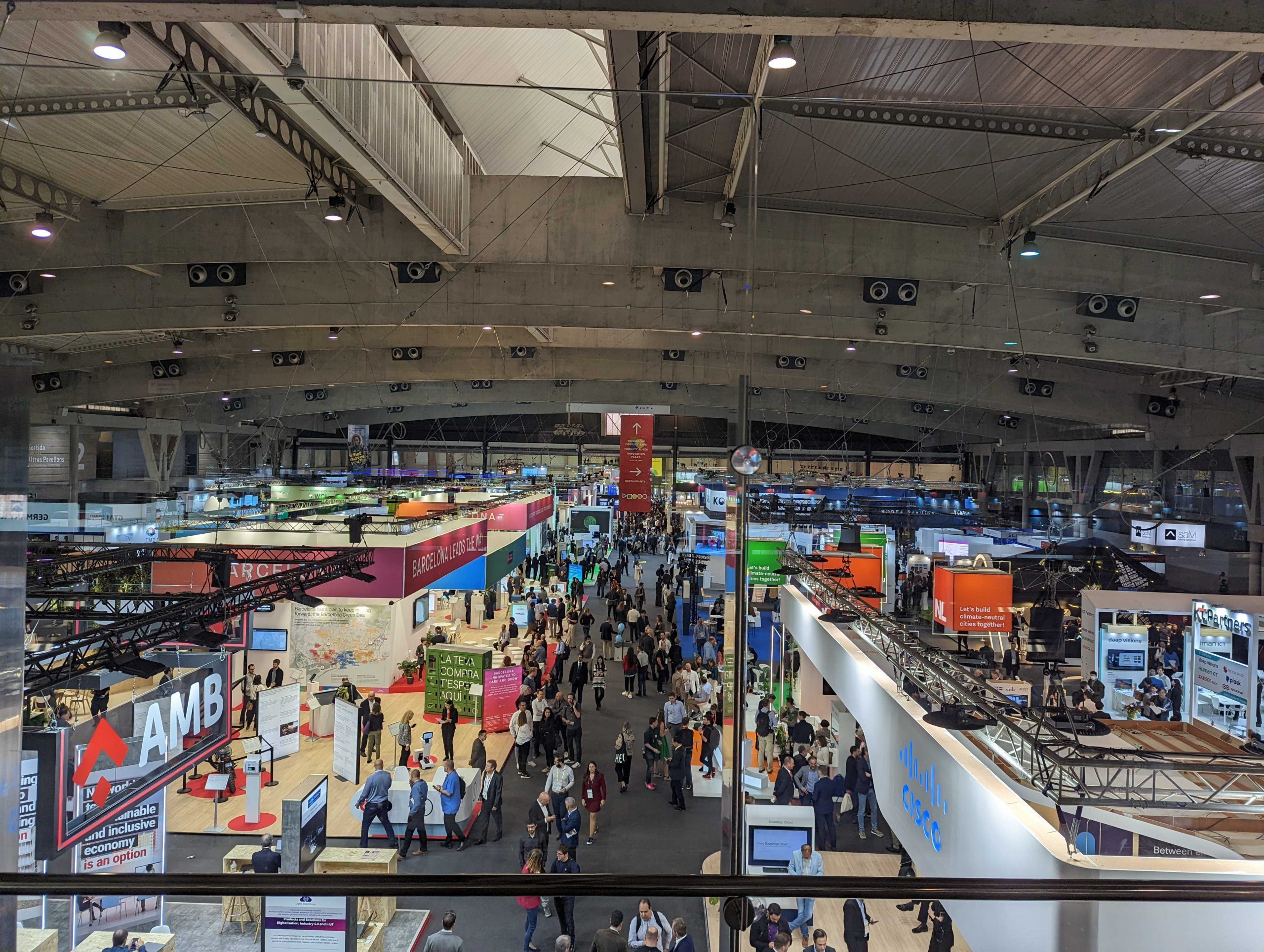We are entering an era in societal development where futuristic infrastructures and even cities are no longer just scenes from science fiction movies. The future is quickly creeping into the reality we now live in. Technology has steadily introduced the smart experience into our lives over the past few years. Our personal spaces have started to turn into smart homes while communal places have also begun to transform into intelligent buildings. It is just a matter of time before the prevalence of smart places.
Globally, numbers indicate that this trend is far from slowing down. As of 2020, the global market value for Smart Cities was estimated at USD 741.6 Billion and is projected to grow to USD 2.5 Trillion by 2026—posting 22.5% CAGR growth over time [1].
What is technological agility?
One of the cornerstones of any smart development project is technology. And for larger development projects of prominent infrastructures or city-wide undertakings—which take years of planning before the actual construction, accounting for technological agility can often be overlooked in these critical phases.

Incongruous Pace of Development of Smart Places
Planning and design for smart infrastructures happen at the early stages of development. while implementation takes place at the last phase of construction. On average, large infrastructure projects can take up to 6 years before development completion. That covers 2 to 3 years of design and planning, plus another 3 to 4 years of construction.
To provide a better perspective, Dubai’s Burj Khalifa, which once stood as the world’s tallest skyscraper, took 6 years to build. And that span does not account for the planning and development phases. As for bigger scale projects, the world’s “first” smart city in South Korea, Songdo International Business District, started development in 2002 and was supposed to launch in 2015 but has not yet been fully completed as of 2022 [2].

In stark contrast, technology continues to accelerate at a much faster rate over the course of the infrastructure development process. Over the last 15 years, while Burj Khalifa and Songdo International Business District were being constructed, a new wave of groundbreaking technological advances has been introduced.
- 2007: Contactless payments (Barclaycard)
- 2008: Fully electric vehicles (Tesla)
- 2009: # of connected devices (12.5B) > global pop. (6.8B)
- 2011: Sharing Economy (uber)
- 2014: Voice-activated smart home (Amazon Echo)
- 2019: 4G to 5G data connection
Due to this glaring disparity in development over time, planning and design of infrastructures with regards to smart building technology can be limited to what solutions are currently available or what’s reasonably within the horizon. But taking into account the pace of technological change, real estate developers run the risk of deploying outdated technology once the project comes to fruition a few years down the road.
Accounting for Societal Shifts
Massive societal shifts are much more difficult to anticipate than technological change. Especially since these are rooted in once-in-a-generation events that can turn established human behaviours on their head practically overnight. And we do not have to look too far back for evidence of this.
In the past couple of years, the COVID-19 pandemic has drastically changed the way consumers interact with brands globally. Lockdowns and physical restrictions shifted a large majority of day-to-day activities online, from doing grocery shopping to working remotely.

This unprecedented shift resulted in companies scrambling to quickly adapt their existing business models to avoid ultimately ending up losing business. The businesses that rely on their established physical spaces to deliver their brand experience had to turn to technology to augment physical assets. And during these trying times, agility in technology clearly separated the brands that thrived through adversity.
Here are some cases of technological agility in practice:
Providing a Safer Entertainment Space
Some of the industries hit hardest by the pandemic are hospitality & entertainment. As generating foot traffic sits at the core of their businesses, lockdowns and physical restrictions have greatly diminished their customer base.
Singapore’s premier horticultural attraction, Gardens by the Bay, has responded to the challenge by introducing technology that allows contactless transactions from purchasing tickets to in-venue store transactions to using AR and tracking to enable safe (and fun) venue navigation and actively avoid congestion of guests at any given point in their visit.
Read more about the case here.
Delivering Contactless Food Experience
Restaurants and food services are also two of the more gravely impacted businesses that have suffered from the pandemic-driven digital shift. They had to quickly find intrinsic value in their physical spaces that once were the centrepiece of their customer experience.
Even before the pandemic hit, Wingstop, the American multinational chain of restaurants specialising in chicken wings, was looking to pilot an innovative in-store customer experience. They were looking to maximise their physical spaces by providing a separate food pick-up amenity via a contactless end to end solution. Customers can order via the mobile app in advance, pay in the venue through a kiosk, and find their food waiting for them in special heated lockers. Allowing for safe customer transactions while making full use of their venues as fully functioning logistic hubs.
Read more about the case here.
How to Design with Agility in Mind
When designing smart buildings or smart cities, there is an increased and very reasonable likelihood of designing experiences using technology as a starting point. There is the tendency to lean towards utilising new and exciting technologies without fully considering the relevant value that they provide when real-life human behaviour is taken into context. Hence, running the risk of integrating technology that can be quickly outdated and, even worse, irrelevant.
Here are several approaches that can help you get into the agile mindset when designing smart infrastructure projects.
1. Human-centred Design Approach for Smart Places
The best place to start is by having a good understanding of your customers or intended users. Have an awareness of their challenges and see what an elevated quality of life looks like from their perspective. You can then align your vision which can allow design flexibility and higher customer relevance for longer periods of time.
| “Organizations need to constantly put people first, creating software, platforms and experiences that aim to improve quality of life and encourage healthy engagement.”
– Max Oglesbee, Monstarlab Americas CEO |
2. Modular Tech Architecture for Smart Places
By definition, modular design is a principle that breaks a larger system into parts that can independently be created, modified, and exchanged with other modules or even between separate systems.
This principle also applies to tech development. Creating highly modular coding and flexible navigation frameworks enable your systems to easily adapt to new technologies and unknown innovations at any time it will be required. Veering away from a singular system avoids potential massive overhauls and costly migrations when adopting new technologies.
3. Embrace Existing Infrastructures for Smart Places
Smart projects are not exclusive to entirely new developments. Existing infrastructures have the potential to be integrated into a wider smart ecosystem and upgrade property value. Elevate your facilities by working alongside current technologies that allow for seamless integrations resulting in systems that are intuitive to users.
One great example is Otis, the world’s largest and oldest elevator company. We partnered with them to create the IoT platform, eCall, which now integrates with over 2 million elevators around the world. Our team created mobile SDKs, robust APIs and comprehensive developer documentation so that third parties can seamlessly integrate elevator access into their own digital experiences.
Read more about the case here.
What you can do next.
First and foremost, the priority is to consider the needs of your customers who are using your spaces, whether they are tenants, employees or consumers. At Monstarlab we are passionate about working in collaboration with our clients to come up with solutions that meet their business goals while delivering an exceptional experience and adding happiness to their customers’ lives.
Talk to us about how we can work in partnership to create truly Smart Places for you and your customers.
Looking for more information?
You can read more about our experts’ insights on Smart Places in our digital inclusivity and accessibility article and smartening up existing infrastructures to achieve sustainability article.
You can also visit our Smart Places page to learn more or download our case study compilation here.
Meet our Expert:

Max Oglesbee | CEO Monstarlab Americas
Connect on LinkedIn | max.oglesbee@monstar-lab.com
In his role as CEO of Monstarlab Americas, Max is responsible for all business operations in the Americas region, leading the team to shape technology to grow our businesses and delight their clients. With digital strategy, design and engineering personnel in cities across the US, Canada, and Colombia.
Prior to joining Monstarlab, Max was a Partner in Control Group, a technology consulting firm that was sold in 2015 to a consortium of investors led by Alphabet’s Sidewalk Labs to form Intersection, where Max helped to establish the Connected Communities and Retail practices within the firm’s consulting business. Max’s projects range from helping the world’s largest retailer to reinvent the shopping experience using digital tools, to creating a Digital Master Plan for Hudson Yards, the largest privately funded real estate development in US history.
Learn more about Monstarlab Americas.
Endnotes:
[1] ReportLinker, “Global Smart Cities Industry”, 2021
[2] South China Morning Post, “South Korea’s ‘Smart City’ Songdo: not quite smart enough?”, 2018
[3] SongdoIBD.com




